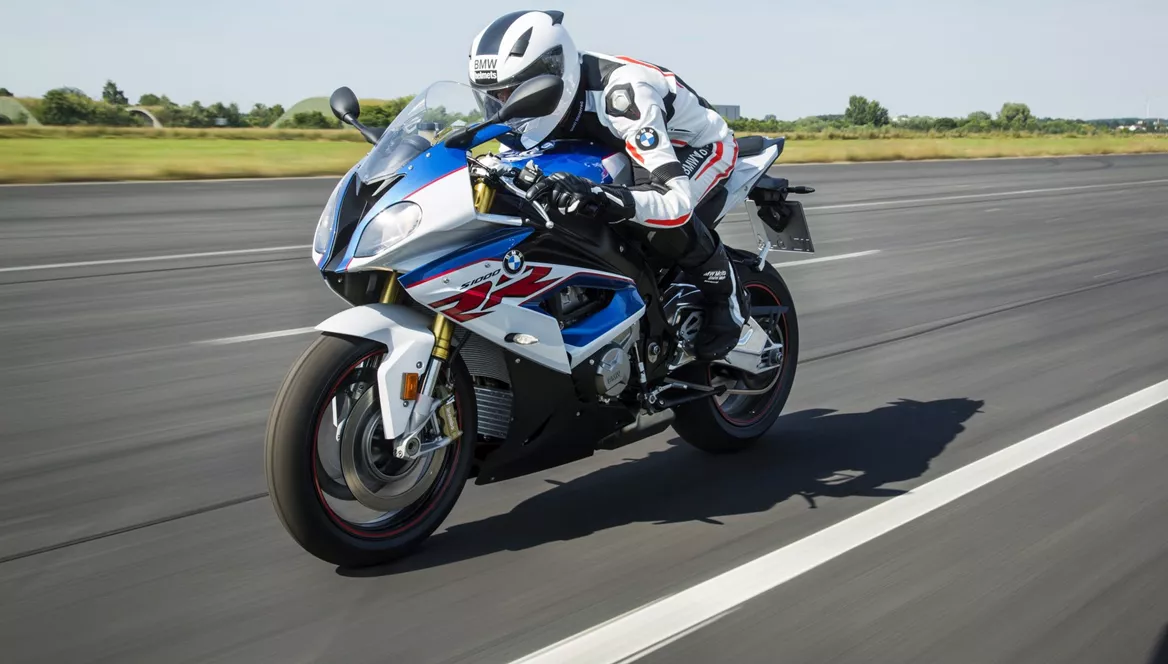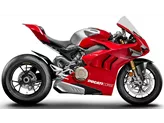Yamaha R1 2019 vs. BMW S 1000 RR 2017

Yamaha R1 2019

BMW S 1000 RR 2017
Overview - Yamaha R1 2019 vs BMW S 1000 RR 2017
The Yamaha R1 model year 2019 and the BMW S 1000 RR model year 2017 are both high-performance supersport motorcycles that offer impressive specifications and features.
Starting with the engine and drive train, the Yamaha R1 2019 is equipped with a 998cc engine that produces 200 horsepower and 112.4 Nm of torque. On the other hand, the BMW S 1000 RR 2017 has a slightly larger 999cc engine that generates 199 horsepower and 113 Nm of torque. Both bikes have a compression ratio of 13 and feature a 4-cylinder configuration with 4 valves per cylinder.
In terms of suspension, both motorcycles come with upside-down telescopic forks at the front. The Yamaha R1 2019 features a Deltabox frame, while the BMW S 1000 RR 2017 has a twin tube frame. Both frames are made of aluminum, providing a lightweight and rigid structure.

Yamaha R1 2019
When it comes to braking, both bikes are equipped with double disk brakes at the front. The Yamaha R1 2019 has a front tire width of 120mm and a diameter of 17 inches, while the rear tire has a width of 190mm and the same diameter. Similarly, the BMW S 1000 RR 2017 has the same tire dimensions as the Yamaha R1 2019.
In terms of dimensions and weights, the Yamaha R1 2019 has a wheelbase of 1405mm and a seat height of 855mm. It has a kerb weight of 199kg with ABS and a fuel tank capacity of 17 liters. On the other hand, the BMW S 1000 RR 2017 has a slightly longer wheelbase of 1438mm and a lower seat height of 815mm. It has a kerb weight of 208kg with ABS and a slightly larger fuel tank capacity of 17.5 liters.

BMW S 1000 RR 2017
Now let's move on to the strengths and weaknesses of each motorcycle. The Yamaha R1 2019 is praised for its powerful engine and clean response. It is considered a very fast track bike in the right hands and has perfectly tuned electronics. However, some users have reported that the ABS system is not 100% satisfactory.
On the other hand, the BMW S 1000 RR 2017 is known for its complete electronic equipment and high-quality features. It has a strong engine that is both powerful and easy to control. The comfortable seating position, especially for taller riders, is another advantage. Additionally, it offers a good chassis for both road riding and track days. However, it has been noted that the brakes may experience fade on the racetrack under high load. The ride quality is also considered good enough for track days but not up to par for racing. Some users have also mentioned that the bike looks a bit greyed out despite being technically up to date.
In conclusion, both the Yamaha R1 2019 and the BMW S 1000 RR 2017 are impressive supersport motorcycles with their own strengths and weaknesses. The Yamaha R1 2019 excels in terms of engine power and response, while the BMW S 1000 RR 2017 offers a complete electronic package and a comfortable seating position. Ultimately, the choice between the two will depend on the rider's preferences and priorities.
Technical Specifications Yamaha R1 2019 compared to BMW S 1000 RR 2017
Pros and Cons in comparison
Pros and Cons in comparison
Yamaha R1 2019

The 2020 R1 model - already available from September - is an evolutionary step that will benefit both the trackday racer and the Yamaha SBK team. The amateur is most likely to benefit from the truly perfect electronics and will also appreciate a little extra power.
BMW S 1000 RR 2017

The well-balanced universal talent will also be at the forefront of many comparison tests in 2017. It still scores with the outstanding engine and the universal and complete equipment.
Price Comparison Avarage Market Price Yamaha R1 vs BMW S 1000 RR
There are a few key differences between a Yamaha R1 2019 and a BMW S 1000 RR 2017. It takes less time to sell a BMW S 1000 RR with 96 days compared to 112 days for the Yamaha R1. Since model year 2005 1000PS.de editors have written 80 reviews for the Yamaha R1 and 135 reviews for the BMW S 1000 RR since model year 2010. The first review for the Yamaha R1 was published on 4/28/2003 and now has more than 3,900 views. This compares to more than 4,000 views for the first review on BMW S 1000 RR published on 4/16/2008.
























